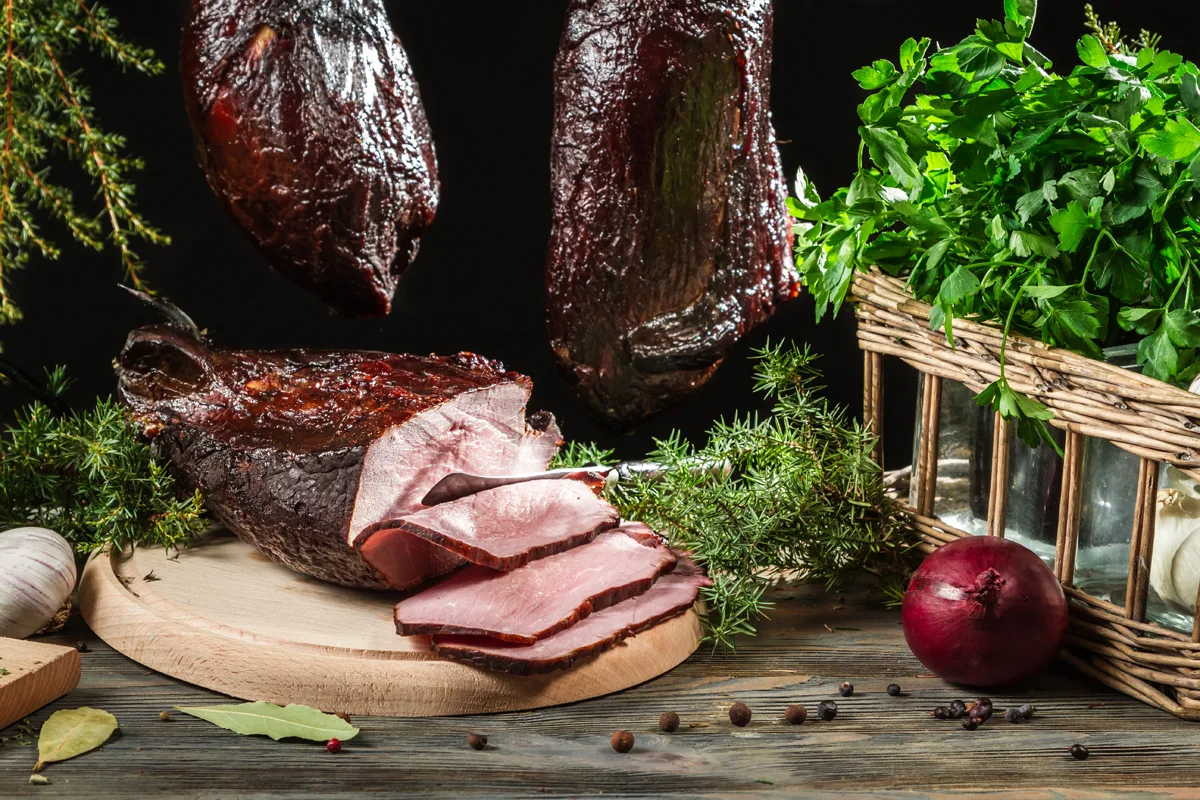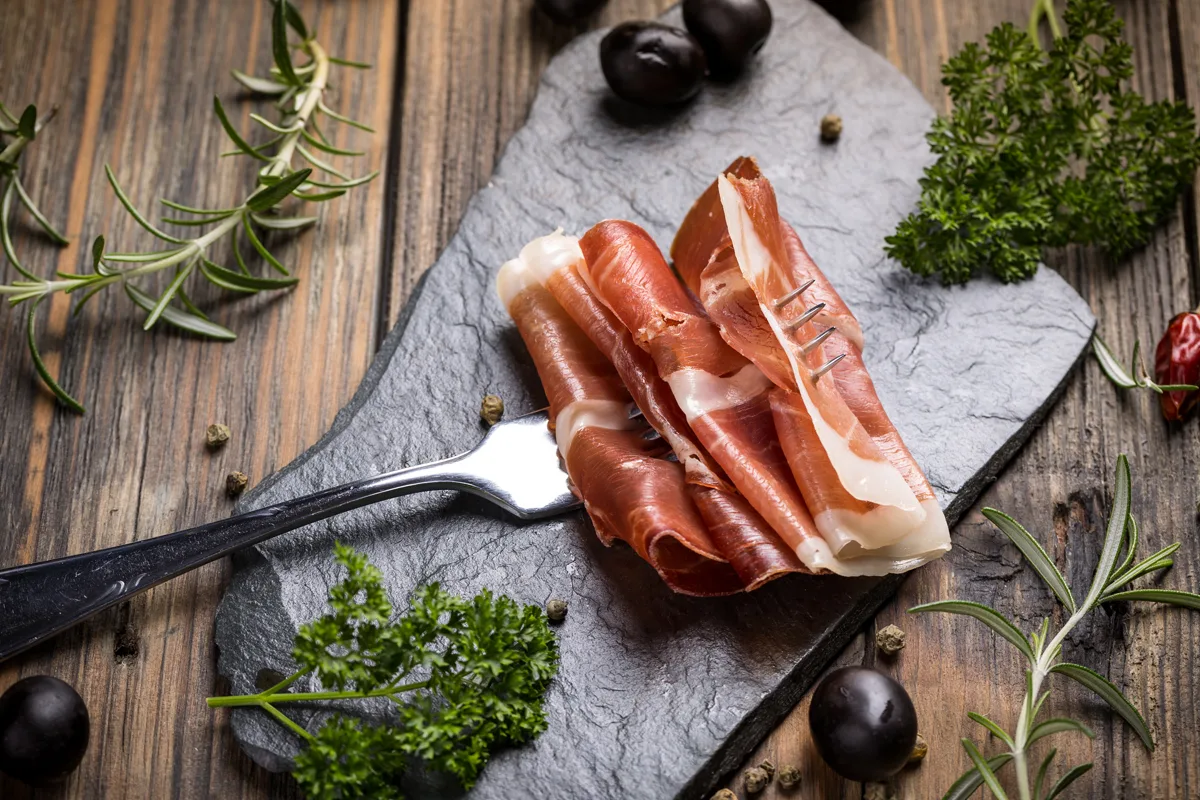Ham is a salty, savory, slightly sweet flavor that is just so irresistible. However, most people are unaware of where the ham comes from on the pig.
But before we get to the ham’s location on the pig’s body, let’s talk about the history of ham.
Contents
Who Invented Ham?
Ham has been around for hundreds of years. Ham is derived from the English term hom or ham, which simply means the concave of the knee.
In the 15th century, people started referring to pork cut fabricated from the pig’s hind leg as ham.
Historians believe China was the inventor of curing ham as it was the first place to cite cured ham.
By the rise of the Roman Empire, curing ham became THE only way to prepare ham. Ham was an extremely popular food that was used for trade.
Cured ham from particular regions became coveted because ham could only be cured under specific conditions.
For example, when curing ham, the room’s temperature should not be so low that the ham freezes, but it should not be so high that the ham spoils.
This is why ham cured in Italy and Spain were known for cured ham and ham products.
Why Is Ham Different Than Pork?
The biggest difference between ham and pork is that hams are pork, but all pork is not ham.
It’s the same idea that steaks are beef, but not all beef is steak. Pork refers to the entire animal, while ham only refers to a specific animal region.
What Part of the Pig Is Ham?
Ham is a cut of pork that is carved from the back leg of the pig. Most people confuse ham with pork butt, but these are two different cuts of pork.
Ironically, pork butt is not the pig’s butt. Pork butt is fabricated from the shoulder of the pig.
In contrast, ham comes from the top of the back leg. Specifically, ham contains the thigh and most of the butt.
Types of Ham
Reading about where ham comes from will make you want to go out and purchase a ham.
However, before you run to the grocery store, you need to know the different types of hams.
Cut of Ham
Hams can be bone-in or boneless. Bone-in hams will take longer to cook, but they will be moister.
Bone-in hams are easier to slice, and the bone adds more flavor and moisture to the meat.
Plus, the bone improves the overall presentation of the ham. Nevertheless, boneless hams are just as delicious as their counterparts.
Cured Hams
Fresh hams are the only uncured hams. Hams are almost always dry-cured or wet-cured.
Wet cured hams are soaked in a salt-based liquid before they are smoked.
Wet cured hams are the most common type of ham found in the grocery store.
In contrast, dry curing ham involves covering the entire ham with salt.
The ham is stored for a few weeks or up to a year, giving the salt time to soak into the meat.
Cooked or Raw Hams
Hams can be sold raw, semi-cooked, or fully cooked. To be labeled a fully cooked ham, it must be cooked to an internal temperature of 148°F or above.
Semi-cooked hams must be cooked to an internal temperature of 137°F.
Raw hams and semi-cooked hams must be cooked until they reach an internal temperature of 145°F.
Smoked and Aged Hams

Smoked hams can be cold smoked at temperatures below 100°F for a few days or weeks.
In contrast, hams can be aged to give them a robust, more intense flavor.
Essentially the hams will be cured, smoked, then hung in a controlled environment and allowed to age for 1-7 years.
Fully aged hams are encased in mold. I know what you’re thinking, who wants to eat moldy ham. You will not be eating moldy ham.
The mold is cut away, and the ham is washed off before it is consumed.
Aged hams are more expensive than wet cured, dry brined, or smoked hams since they have a deeper, richer flavor and take more work to produce.
Final Thoughts
Few types of meat can take your breath away, like a slice of delicious ham cam.
Now that you know where ham comes from on the pig, you can pick the perfect ham for your recipe.
Plus, you will be able to share the information you just learned with your loved ones as you serve the ham with some delicious sides, which will make you look like a ham expert.
You might also be interested in the following:
- What Part of the Pig Is Chorizo
- What Part of the Pig Is the Ham Hock
- What Part of the Pig Is Pork Chops
- What Part of the Pig Is Bacon

I have been smoking and grilling meat from an early age and enjoy sharing my knowledge and expertise through the hundreds of articles I have written about BBQ. I hope to make everyone’s BBQ journey that little bit easier.

